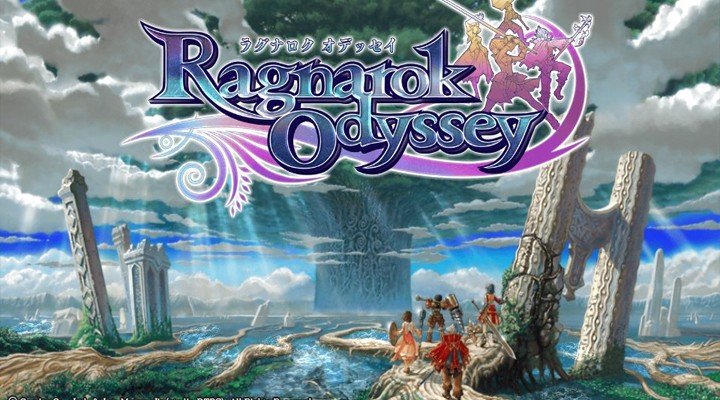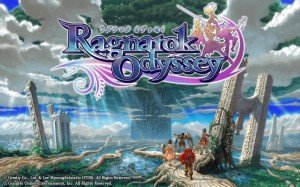These days, MMORPGs just don’t have the selling power that they used to. This is a fact that has become more apparent with the decline of subscription rates, including undisputed online giant World of Warcraft and licensed giant Star Wars: The Old Republic. It is for this reason that the decision to change the Ragnarok Online series from a traditional MMO to a console action game was a wise one, even though its platform of choice, the Playstation Vita, is currently 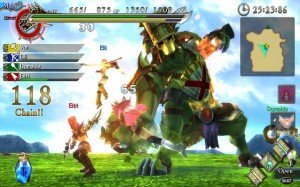 experiencing a much lower-than-anticipated adoption rate.
experiencing a much lower-than-anticipated adoption rate.
Developed by GungHo Online Entertainment and released in the West by Xseed Games, Odyssey’s narrative is as minimal as its stripped-down gameplay; players create a custom character who has enlisted to defend the kingdom from an onslaught of monster attacks, including massive giants capable of destroying entire castles in a single blow. Further details about the cause of the attacks and the kingdom you are tasked with defending can be ascertained through NPC dialog, but rarely does the game drag players down with exposition: if you merely want to sign up for quests and start monster-slaying, you can do so within just a few seconds.
Before venturing to the outside world, players can utilize the various features surrounding the main quest room, such as vendors selling potions and cards (more on that below), a chest containing all of your owned equipment and items, and, of course, a quest giver that lists your available tasks. Venturing into town opens up more vendors, including a blacksmith who sells weapons (and can refine the power of existing ones with the right materials), a tailor who sells extra outfits or can apply colored dye to existing ones, a barber who can change the look of your character, and so on. Players also have access to their own personal living quarters which contain even more useful interactive objects, including a crystal that lets you change jobs, a record player for playing collectible BGM, and an adorable creature vendor that sells DLC quests
Like the story itself, the town is minimal in terms of NPCs and pathways, containing only the bare minimum features to get players questing, which is perfectly fine for a handheld title that prioritizes action over overstuffed worlds. Once a quest is selected, the player will automatically warp to a monster-filled area where every single living thing is eager to kill you. Vanquishing these foes will yield all manner of random items, crafting materials, crystals, and other forms of loot, but in order to finish the quest, you must complete the specific objective before time runs out. Such objectives include collecting a certain amount of materials from fallen enemies, defeating a specific number of enemy types, or taking down a bigger and stronger boss. Each area has multiple pathways leading to different parts of the map, requiring a bit of trial and error in order to find the right way to your goal, but they aren’t so big that you’ll run the risk of getting sidetracked.
When locked in battle, players have two buttons for medium and strong attacks, which can also be chained into several combos, including the ability to launch enemies into the air for continued juggling. You can sprint or dash across the ground or through the air to either chase an enemy or evade their attack. These actions will deplete your stamina bar, but due to its fast recovery, you’ll hardly be impaired by it. Keeping an eye on your life meter is far more important, as certain enemies tend to do higher damage than others, causing your health to deplete quickly and without warning. Fortunately, falling in battle does not mean the end just yet: in each quest, you are given a total of three lives,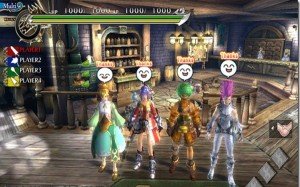 and losing one will have you immediately rise up on the spot with full health in order to continue where you left off.
and losing one will have you immediately rise up on the spot with full health in order to continue where you left off.
The combat in Ragnarok Odyssey owes much to Capcom’s ridiculously popular (at least in Japan) Monster Hunter series, including its placement of bigger monsters that players may do well not to mess with until they’ve sharpened their weapons to a significant point. Like Monster Hunter, boss enemies also possess various weak points in their body which can be individually targeted and may yield certain beneficial materials once destroyed; for instance, breaking an Ogre King’s helmet may drop rare crafting materials, while taking out the gauntlet on his right arm could drop another rare item. A lock-on reticle also allows players to target specific enemies as well as cycle around them, but can prove rather finicky when targeting enemies outside the player’s view. Worse still, the game lacks the ability to snap the camera directly behind your character, which often results in damage from off-screen enemies.
Regardless, combat is fast and fluid and also takes a page from Dynasty Warriors by including some anime-exaggerated attacks that send monsters flying across the screen, complete with a whooshing sound effect. Battles can prove especially hectic during sections that lock you in a confined space until you defeat the required number of enemies within. For these moments, you can unleash your stored tension meter, allowing a brief window of powered-up speed and attacks that can tear through the toughest terrors as well as restore your health with each attack. There are also multiple jobs that allow for unique play styles: the Sword Warrior is a balanced mid-tier fighter who can also block attacks; Hammersmith foregoes speed for raw, lumbering attacks; Mage, Cleric, and Hunter can take out enemies from a distance; and Assassin unleashes speedy attacks coupled with quick evasion.
These jobs can be powered up further with cards, which can be equipped to your outfit to apply additional bonuses. Different cards feature different stats, such as poison resistance, increased attack and defense, quicker dashing, increased treasure drops, and so on. Each outfit contains a limited number of card slots, although this number can be increased when you find the right materials dropped by enemies during quests.
Any gamer who has dabbled with an action RPG should be familiar with collecting loot, and the crafting system here is as simple as taking the items to the respective merchant in order to boost your equipment. That said, the game could have done a better job at keeping track of your acquired items; at the end of each quest, your collected loot is tallied up, and you can then store items in your closet or sell them on the spot. Without knowing what each item is used for beyond a vague description, it’s better to just store everything and determine later what materials a merchant needs in order to raise your equipment’s parameters. The items themselves also share the same bland cube design on the field, giving no indication 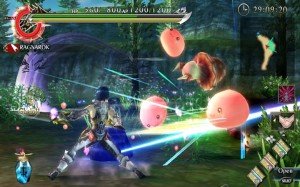 if one cube might be rarer and more important than the other.
if one cube might be rarer and more important than the other.
Visually, the game resembles a mid-tier PS2 game; a few years ago that would have been impressive, but with the extra horsepower of the Vita, our portable standards have risen a bit. While hardly a bad-looking game, it isn’t really doing anything beyond the capabilities of the PSP (which, as of this writing, has still sold more units this year than the Vita itself). Character models are especially bland, with no facial expressions whatsoever, instead conveying emotion through emoticons ripped right out of a social network.
Speaking of which, the game also allows for local and online multiplayer with up to four players. Hosts are allowed to choose any of the game’s quests that they have already completed, but all players who wish to participate must have also completed that quest beforehand. While the online matchmaking allows you to filter search results by chapter, it only does so with “Chapter +” restrictions, meaning that you will be unable to search by chapters up to where you have left off. Connection-wise, the game can work as intended, but if even one player has a slower connection, the entire session can see a dramatic amount of slowdown.
While Ragnarok Odyssey could have used a bit more tweaking with its inventory management and online connectivity, there is a lot of fun to be had with its tight combat and addictive button-mashing. Foregoing the more slow-paced distractions also works in its favor, allowing for a quick pick-up-and-play handheld experience.
Rating: 









This review is based on a review copy of the Playstation Vita version of Ragnarok Odyssey developed by GungHo Online Entertainment, published by Xseed Games

